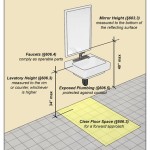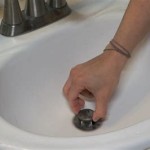Understanding Drain Assembly for Kitchen Sinks
A kitchen sink drain assembly is a vital component that ensures smooth water drainage from the sink. It comprises various parts that work together to effectively remove wastewater and prevent clogs. Understanding the different types of drain assemblies and their functionalities is crucial for maintaining a functional and hygienic kitchen sink. This article will delve into the intricacies of kitchen sink drain assemblies, exploring their key components, types, and installation considerations.
Components of a Kitchen Sink Drain Assembly
A typical kitchen sink drain assembly includes the following components:
- Drain Strainer: This is the first line of defense against unwanted debris entering the drain. It features a basket-like design with small holes that allow water to pass through while trapping larger particles like food scraps, hair, and other objects.
- Drain Pipe: This is the primary conduit for wastewater from the sink to the drain line. The pipe is usually made of PVC or ABS plastic, which are corrosion-resistant and durable. They come in various sizes depending on the size of the sink and the amount of wastewater flow.
- Tailpiece: This is a short, adjustable pipe section that connects the drain pipe to the P-trap below. It allows for flexibility in positioning the drain pipe and ensures a secure connection.
- P-Trap: This essential component is shaped like a "P" and acts as a water seal, preventing sewer gases from entering the kitchen. The water in the trap creates a barrier that prevents odors from rising up the drain pipe.
- Drain Flange: This is a metal ring that secures the drain assembly to the sink and provides a watertight seal. It typically clamps onto the sink's drain hole and helps prevent leaks.
- Pop-Up Stopper: Many kitchen sinks feature a pop-up stopper that allows for easy control of water flow. When pushed down, it blocks the drain, filling the sink. When pulled up, it allows water to drain freely.
Types of Kitchen Sink Drain Assemblies
There are various types of kitchen sink drain assemblies available, each with its own set of advantages and disadvantages. Some common types include:
- Standard Drain Assembly: This is the most basic type, featuring a simple drain strainer, drain pipe, and P-trap. It's affordable and widely available but may not offer advanced features like a pop-up stopper.
- Pop-Up Drain Assembly: These assemblies include a pop-up stopper that provides easy control over water flow. They are popular for their convenience, allowing users to fill the sink for washing dishes or simply block the drain for other tasks.
- Basket Strainer Drain Assembly: These assemblies feature a larger basket-like strainer that effectively captures larger debris. They are ideal for kitchens with heavy food preparation or large families. They offer greater capacity for trapping debris and require less frequent cleaning.
- Waste Disposal Drain Assembly: These assemblies are designed to accommodate garbage disposals. They typically have a larger drain pipe and a specialized drain flange that connects to the disposal unit. They require a separate drain line for the disposal and are suitable for kitchens that utilize this appliance.
Installation Considerations for Kitchen Sink Drain Assemblies
Installing a kitchen sink drain assembly is a relatively straightforward task, but it's important to follow proper procedures to ensure a secure and leak-proof installation. Consider the following factors:
- Sink Type: Different sink types have different drain hole sizes and configurations. Ensure the drain assembly you choose is compatible with your sink.
- Pipe Size: The size of the drain pipe should be appropriate for the size of the sink and the expected wastewater flow. Oversized pipes can lead to slow drainage, while undersized pipes can cause clogging.
- P-Trap Position: The P-trap should be installed at a specific angle to ensure proper water sealing and prevent sewer gases from entering the kitchen. Refer to manufacturer instructions or consult a professional if unsure.
- Tools and Materials: Basic plumbing tools such as a wrench, pliers, and pipe cutters are essential for installation. You will also need pipe sealant, Teflon tape, and possibly a drain cleaner for cleaning the drain.
- Professional Installation: If you are unsure about your plumbing skills, it is always a good idea to contact a professional plumber for installation. They can ensure correct installation, prevent leaks, and guarantee a functional drain assembly.

Plumbflex 3 1 2 In 4 Heavy Duty Kitchen Sink Stainless Steel Drain Assembly With Strainer Basket Kohler Style Stopper Ess3157 The Home

How To Replace A Kitchen Sink Basket Strainer Diy Family Handyman

Stainless Steel Drain Assembly Kit Kitchen Sink Strainer For Single Basin

Plumbflex 3 1 2 In 4 Heavy Duty Kitchen Sink Stainless Steel Drain Assembly With Strainer Basket Kohler Style Stopper Ess3157 The Home

Highcraft Kitchen Sink 3 1 2 Inch Stainless Steel Drain Assembly With Strainer Basket And Rubber Stopper Long Extended Shank 4 Wal Com

8 Best Sink Drain Ideas Diy Plumbing Installation

Ruvati Kitchen Sink Strainer Drain Assembly Brass Gold Tone Stainless Steel Rva1022gg Usa

How To Install Kitchen Sink Drain For Beginners Youtube

How To Replace A Kitchen Sink Strainer 1 Tom Plumber

Kitchen Sink Drain Assembly A Step By Guide On How To Install Maryland Sewer And Plumbing Service Inc







